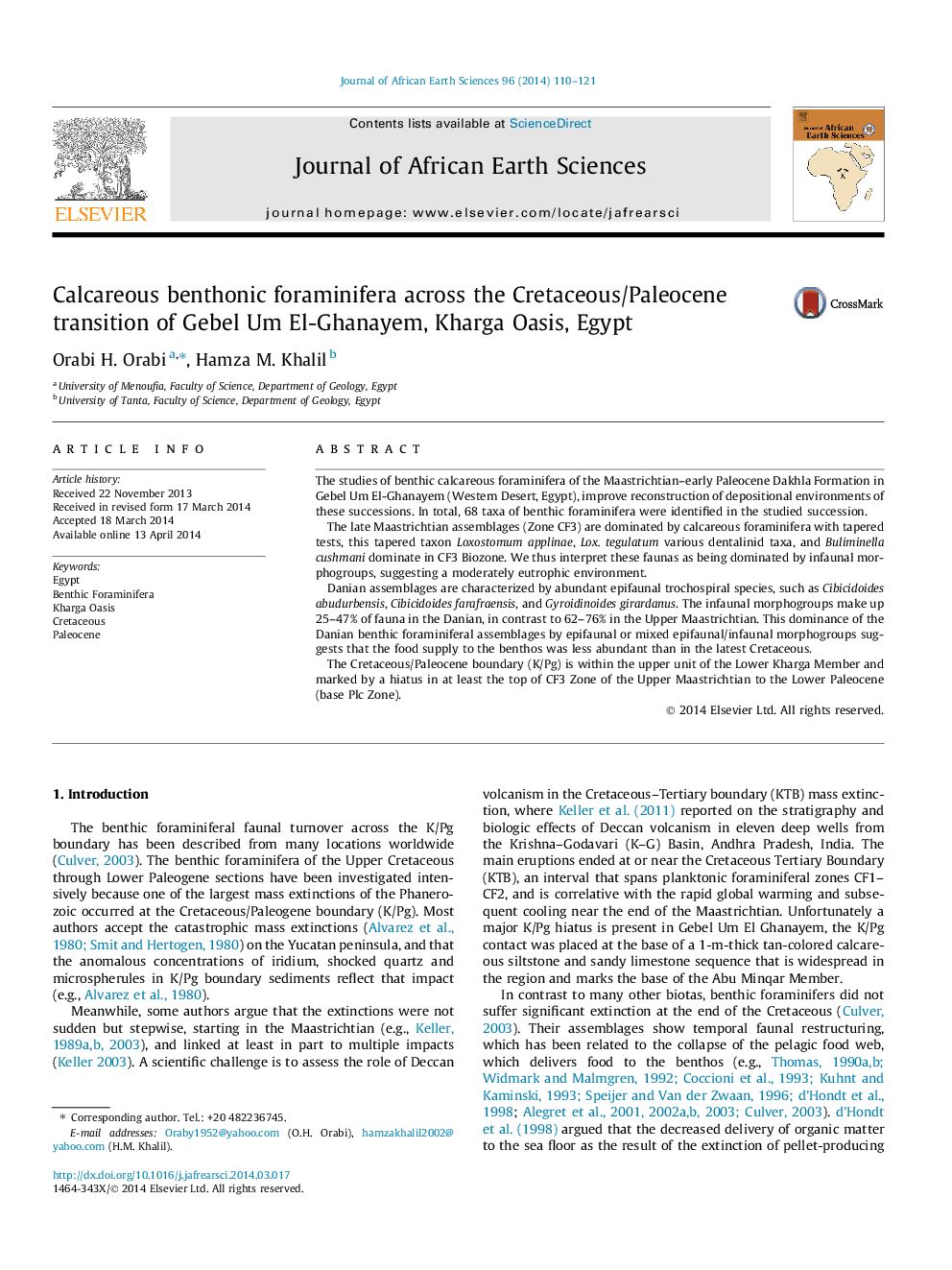| Article ID | Journal | Published Year | Pages | File Type |
|---|---|---|---|---|
| 4728868 | Journal of African Earth Sciences | 2014 | 12 Pages |
•The Cretaceous/Paleocene boundary is marked by a hiatus.•Zone CF3 was dominated by tapered calcareous benthic morphogroup, suggested eutrophic environment.•Zone P1c was characterized by mixed epifaunal/infaunal morphogroups suggested the food supply was less abundant than Zone CF3.
The studies of benthic calcareous foraminifera of the Maastrichtian–early Paleocene Dakhla Formation in Gebel Um El-Ghanayem (Western Desert, Egypt), improve reconstruction of depositional environments of these successions. In total, 68 taxa of benthic foraminifera were identified in the studied succession.The late Maastrichtian assemblages (Zone CF3) are dominated by calcareous foraminifera with tapered tests, this tapered taxon Loxostomum applinae, Lox. tegulatum various dentalinid taxa, and Buliminella cushmani dominate in CF3 Biozone. We thus interpret these faunas as being dominated by infaunal morphogroups, suggesting a moderately eutrophic environment.Danian assemblages are characterized by abundant epifaunal trochospiral species, such as Cibicidoides abudurbensis, Cibicidoides farafraensis, and Gyroidinoides girardanus. The infaunal morphogroups make up 25–47% of fauna in the Danian, in contrast to 62–76% in the Upper Maastrichtian. This dominance of the Danian benthic foraminiferal assemblages by epifaunal or mixed epifaunal/infaunal morphogroups suggests that the food supply to the benthos was less abundant than in the latest Cretaceous.The Cretaceous/Paleocene boundary (K/Pg) is within the upper unit of the Lower Kharga Member and marked by a hiatus in at least the top of CF3 Zone of the Upper Maastrichtian to the Lower Paleocene (base Plc Zone).
